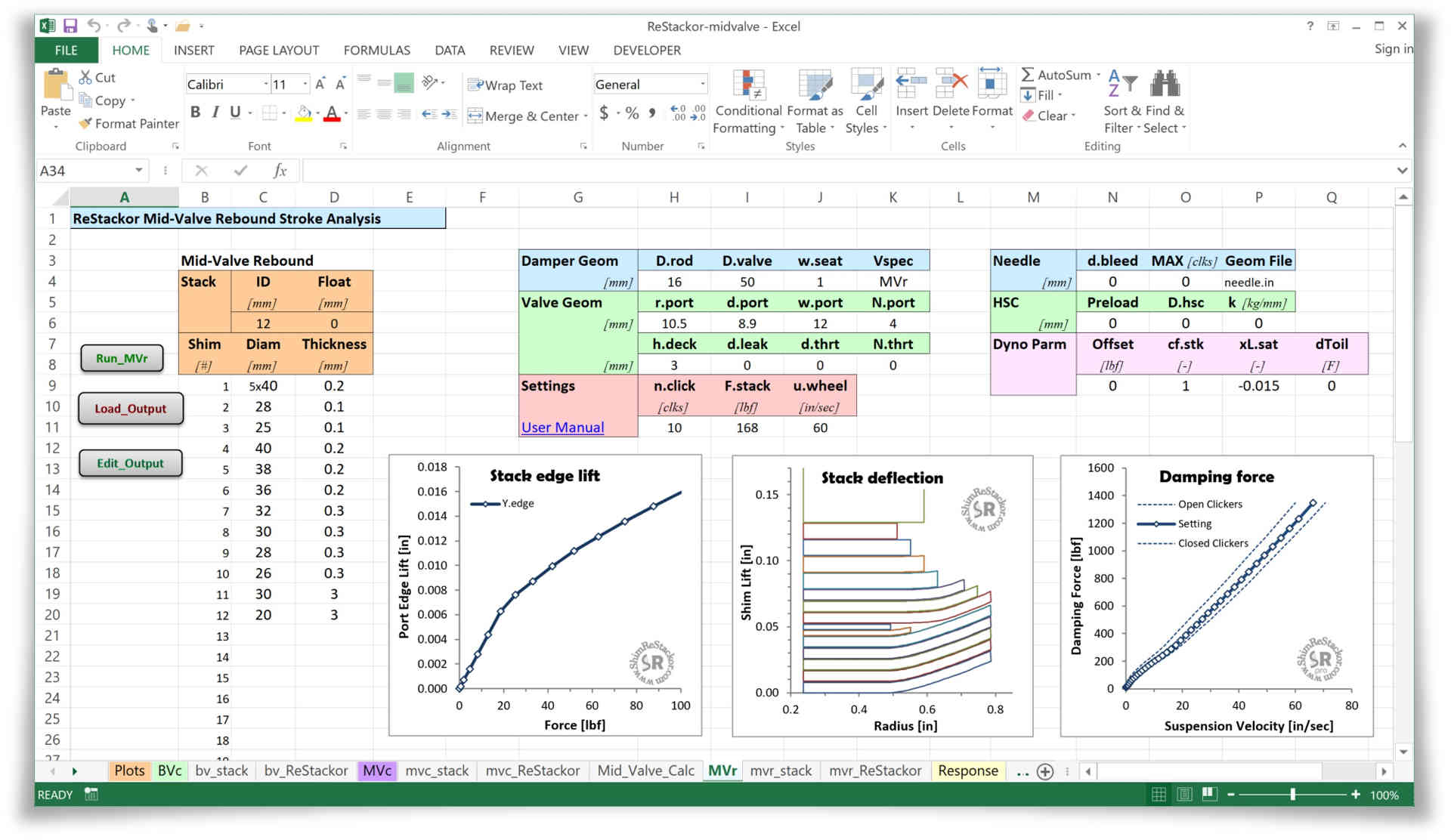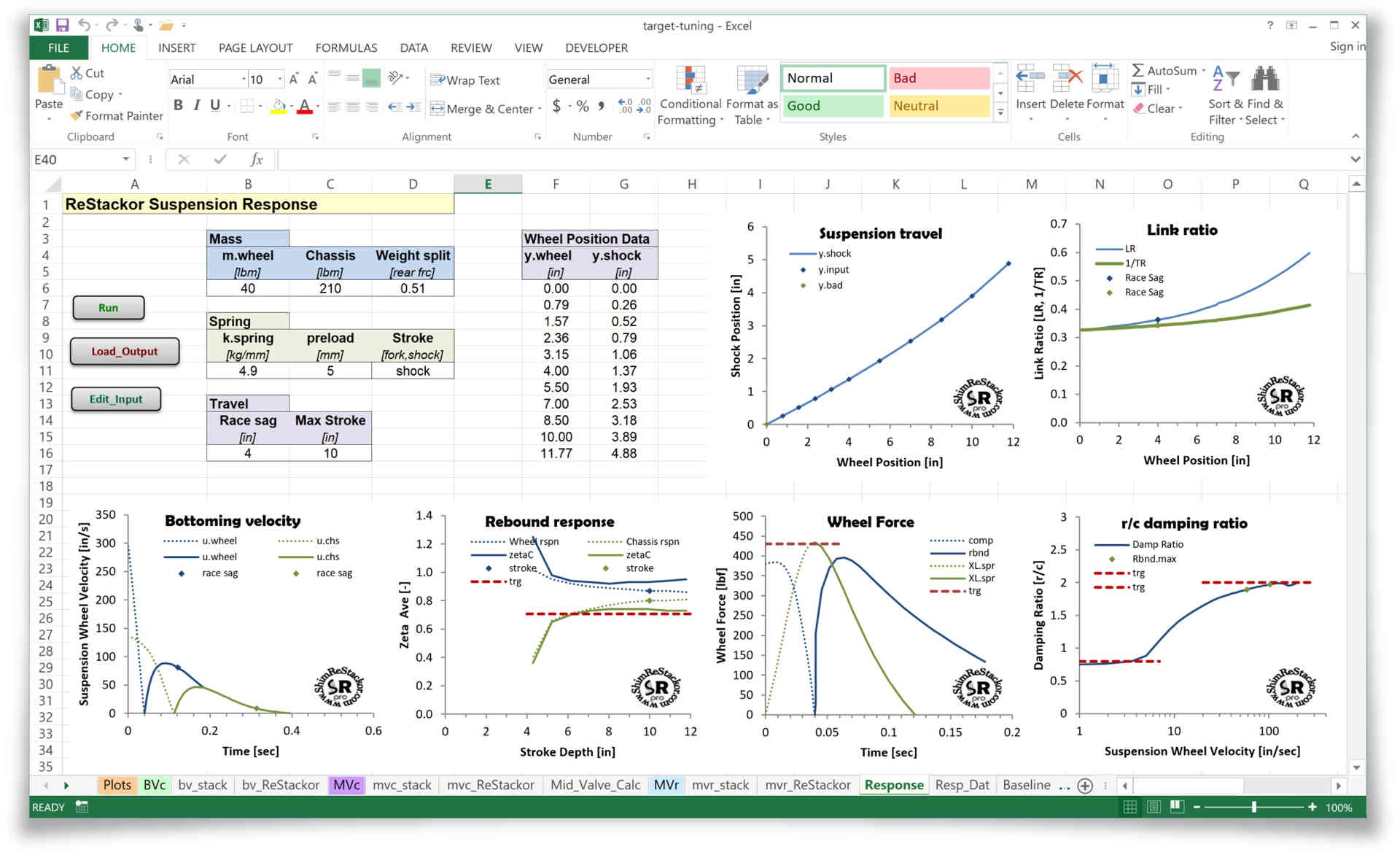Fine tune suspension performance far beyond the limits previously possible
Shim ReStackor computes the damping force of shock absorbers, the flow resistance of shock absorber valves and the deflection stiffness of shim stacks. Calculation results are displayed through a spreadsheet interface showing deflection of the shim stack, the closure of crossover gaps, the clicker tuning range and the shock absorber damping force across the entire range of suspension velocities.
Tuning damping force is a simple matter of adding or removing shims from the stack to hit a specific damping force target or clicker setting. The capability to see damping force changes created by each shim modification makes tuning simple, easy and intuitive. Shim ReStackor takes the guesswork out of shim stack tuning.

Optimize suspension response
The basic physics of F=ma dictates suspension motion. Shim ReStackor response calculations combine spring rate, rider weight, bike weight, link ratio and damping to determine the jump landing impact that bottoms the chassis and high speed impacts that bottom the wheels or deflect the chassis off the bump. Stiff compression damping required for jump landings produces poor suspension compliance defining the difference between motocross and enduro suspension setups.
Spring-mass-damper theory defines rebound damping zeta values of 0.7 to give the fastest possible suspension response with damping that is still stiff enough to suppress suspension resonance. Shim ReStackor response calculations compute rebound damping zeta values allowing tuning of rebound shim stacks and crossovers to produce a consistent response, “feel”, and behavior across the suspension stroke depth range.

